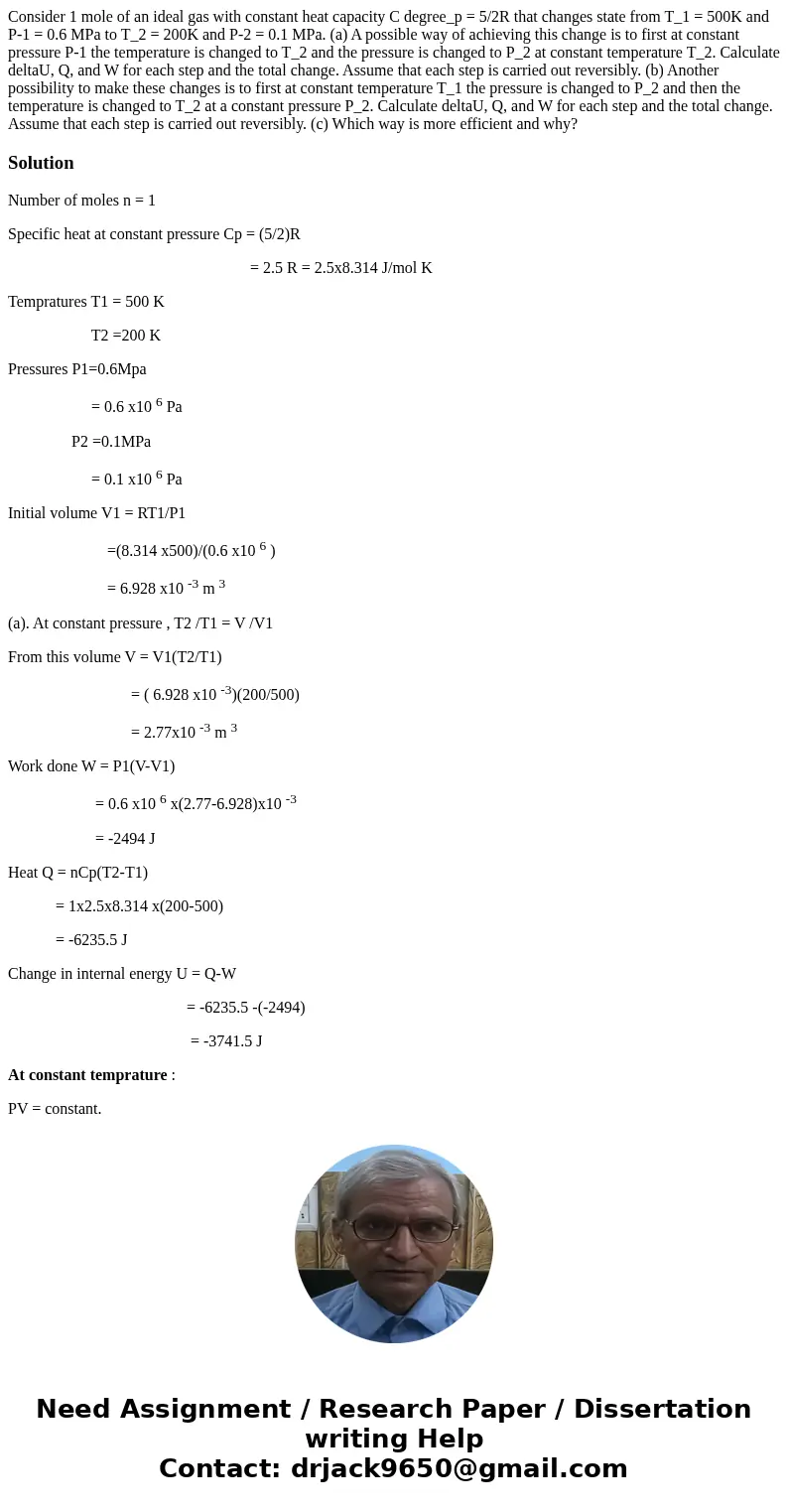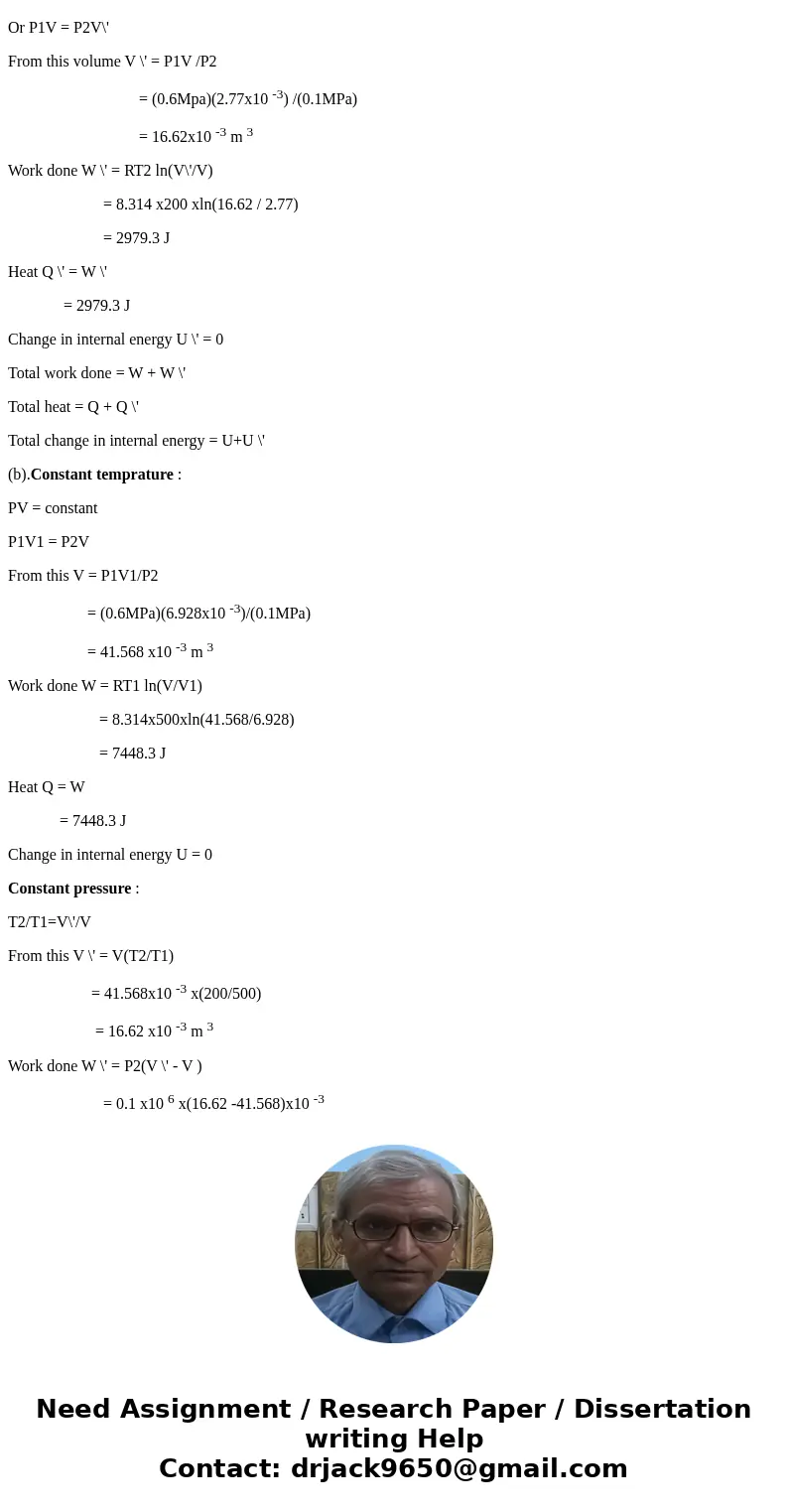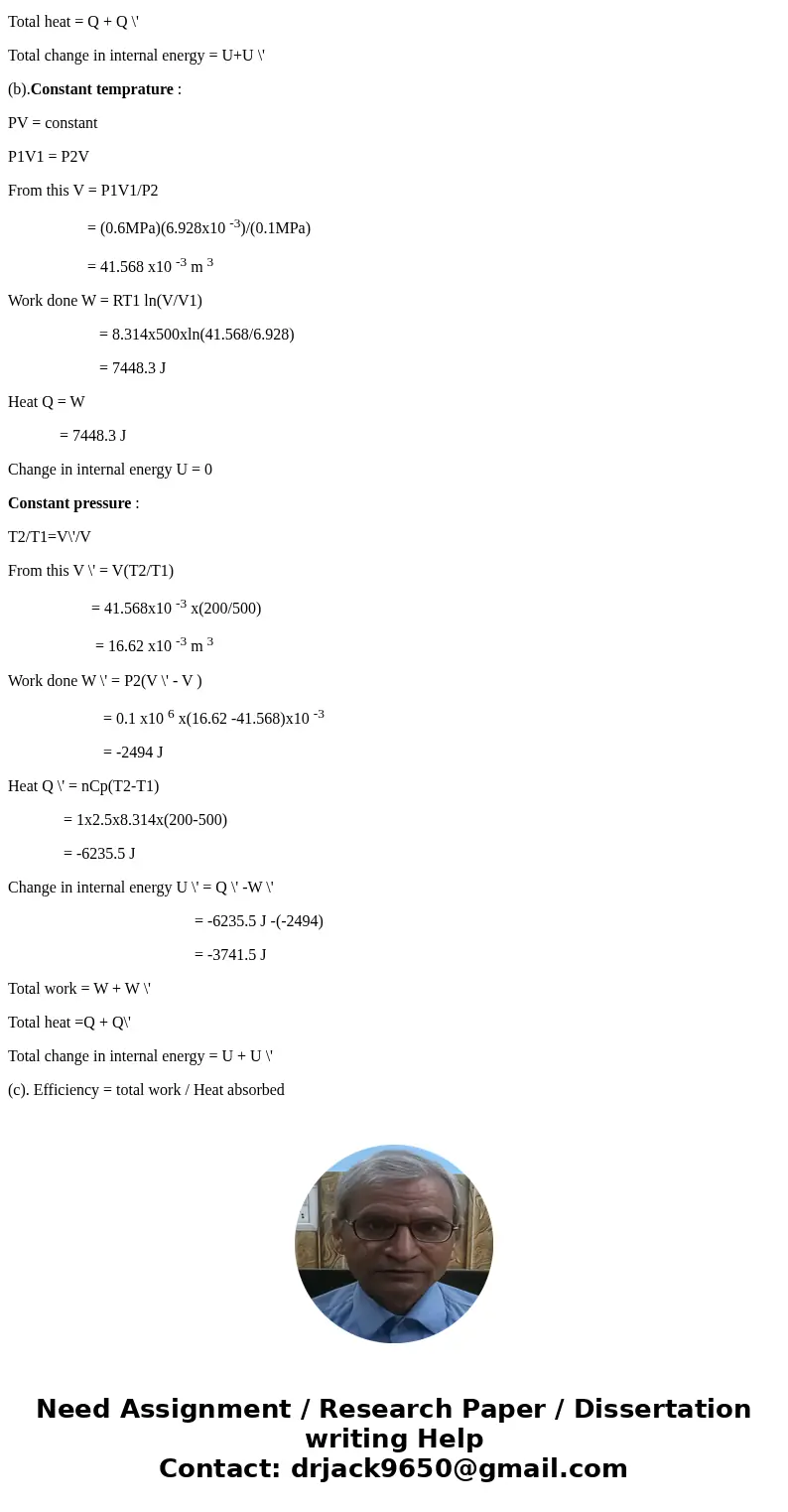Consider 1 mole of an ideal gas with constant heat capacity
Solution
Number of moles n = 1
Specific heat at constant pressure Cp = (5/2)R
= 2.5 R = 2.5x8.314 J/mol K
Tempratures T1 = 500 K
T2 =200 K
Pressures P1=0.6Mpa
= 0.6 x10 6 Pa
P2 =0.1MPa
= 0.1 x10 6 Pa
Initial volume V1 = RT1/P1
=(8.314 x500)/(0.6 x10 6 )
= 6.928 x10 -3 m 3
(a). At constant pressure , T2 /T1 = V /V1
From this volume V = V1(T2/T1)
= ( 6.928 x10 -3)(200/500)
= 2.77x10 -3 m 3
Work done W = P1(V-V1)
= 0.6 x10 6 x(2.77-6.928)x10 -3
= -2494 J
Heat Q = nCp(T2-T1)
= 1x2.5x8.314 x(200-500)
= -6235.5 J
Change in internal energy U = Q-W
= -6235.5 -(-2494)
= -3741.5 J
At constant temprature :
PV = constant.
Or P1V = P2V\'
From this volume V \' = P1V /P2
= (0.6Mpa)(2.77x10 -3) /(0.1MPa)
= 16.62x10 -3 m 3
Work done W \' = RT2 ln(V\'/V)
= 8.314 x200 xln(16.62 / 2.77)
= 2979.3 J
Heat Q \' = W \'
= 2979.3 J
Change in internal energy U \' = 0
Total work done = W + W \'
Total heat = Q + Q \'
Total change in internal energy = U+U \'
(b).Constant temprature :
PV = constant
P1V1 = P2V
From this V = P1V1/P2
= (0.6MPa)(6.928x10 -3)/(0.1MPa)
= 41.568 x10 -3 m 3
Work done W = RT1 ln(V/V1)
= 8.314x500xln(41.568/6.928)
= 7448.3 J
Heat Q = W
= 7448.3 J
Change in internal energy U = 0
Constant pressure :
T2/T1=V\'/V
From this V \' = V(T2/T1)
= 41.568x10 -3 x(200/500)
= 16.62 x10 -3 m 3
Work done W \' = P2(V \' - V )
= 0.1 x10 6 x(16.62 -41.568)x10 -3
= -2494 J
Heat Q \' = nCp(T2-T1)
= 1x2.5x8.314x(200-500)
= -6235.5 J
Change in internal energy U \' = Q \' -W \'
= -6235.5 J -(-2494)
= -3741.5 J
Total work = W + W \'
Total heat =Q + Q\'
Total change in internal energy = U + U \'
(c). Efficiency = total work / Heat absorbed



 Homework Sourse
Homework Sourse